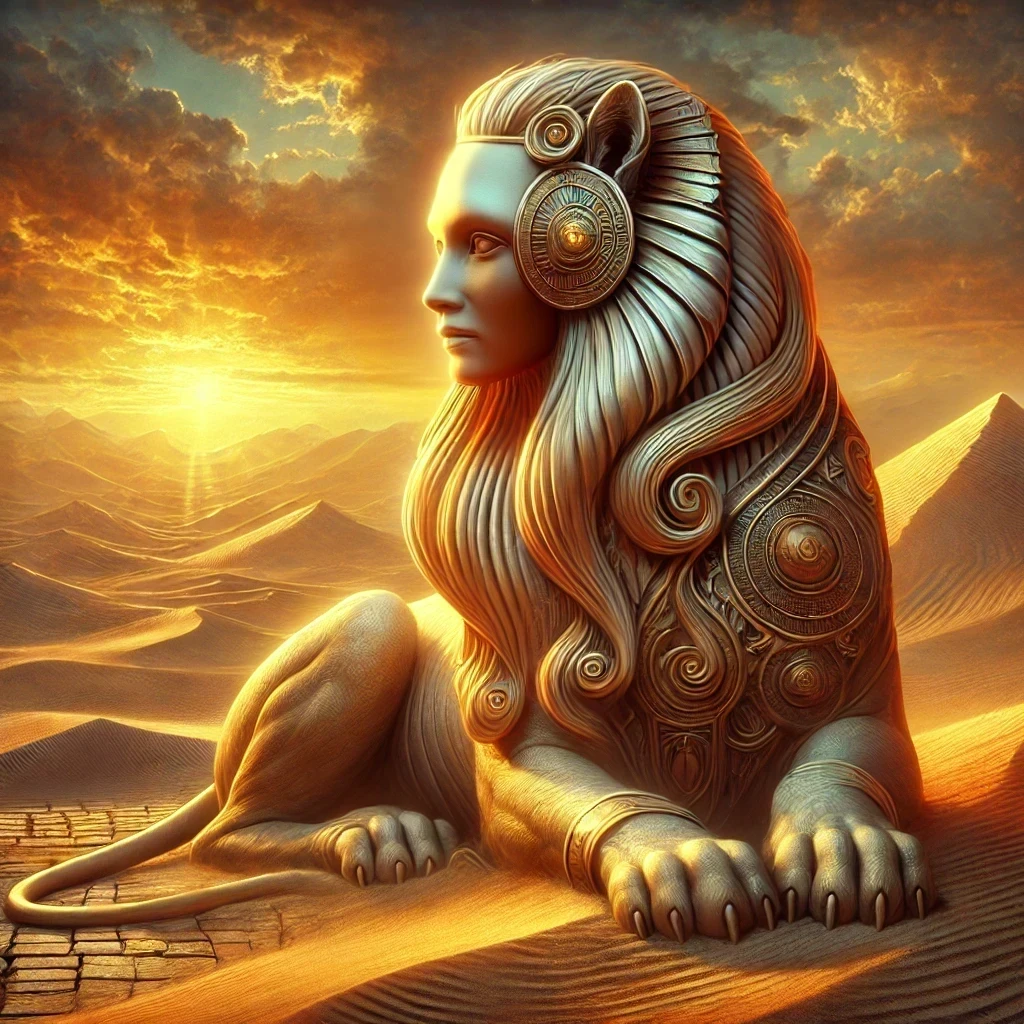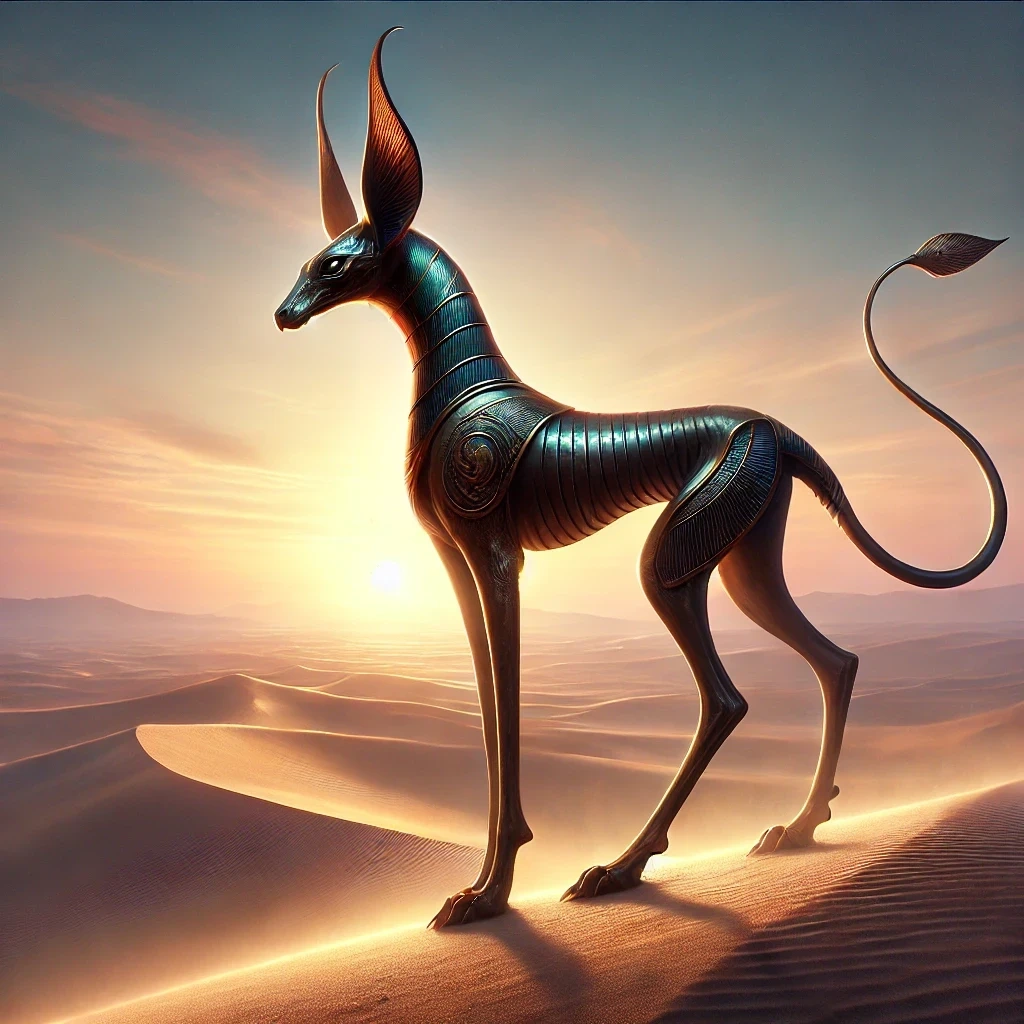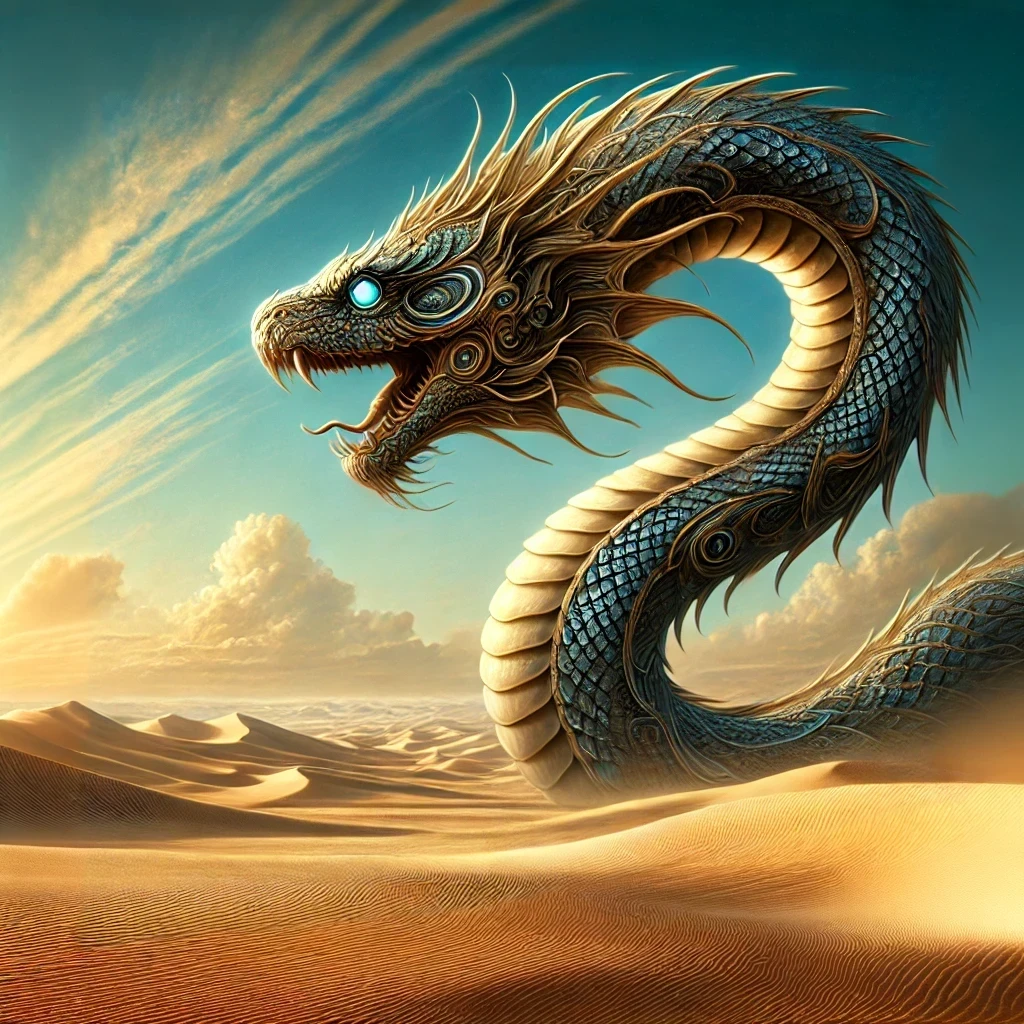The Sphinx is one of the most iconic and enigmatic creatures in Egyptian mythology. Characterized by its majestic appearance—the body of a lion and the head of a human—the Sphinx has fascinated civilizations for millennia.
Historical & Cultural Background
The origins of the Sphinx can be traced back to Ancient Egypt, where it played a significant role in art, religion, and mythology. The most famous depiction of the Sphinx is the Great Sphinx of Giza, a colossal limestone statue that has stood sentinel near the pyramids for over 4,500 years. Constructed during the reign of Pharaoh Khafre, this monument reflects the Egyptian reverence for divine kingship and protective guardians.
The Sphinx in Egyptian Culture
In Egyptian mythology, the Sphinx represented a protective deity, often associated with the sun god Ra. It was believed to guard sacred spaces, such as temples and tombs, warding off malevolent forces. Temple reliefs and inscriptions depict the Sphinx as a loyal servant of the gods, emphasizing its role as a guardian of divine order.
Historical Sources
The earliest references to the Sphinx appear in pyramid texts and temple carvings, where it is portrayed as both a protector and a symbol of royal power. Greek historians, such as Herodotus, later documented their encounters with Egyptian Sphinxes, blending their observations with local myths.

Myths & Legends
Stories of the Sphinx vary widely across cultures, each offering unique interpretations and narratives. In Egyptian mythology, the Sphinx is often seen as a benevolent guardian, while in Greek mythology, it takes on a more sinister role.
The Greek Sphinx
In Greek tradition, the Sphinx is a female creature known for her cunning and malevolence. The most famous myth involves the Sphinx posing a riddle to travelers near the city of Thebes: “What walks on four legs in the morning, two legs at noon, and three legs in the evening?” Those who failed to answer correctly were devoured. Oedipus eventually solved the riddle, leading to the Sphinx’s demise.
Symbolism & Meaning
The Sphinx holds profound symbolic value, embodying concepts of mystery, strength, and protection. Its dual nature—part human and part lion—represents the harmonious union of intellect and physical power.
Egyptian Symbolism
In Egyptian culture, the Sphinx symbolized the pharaoh’s divine authority and protective role over the land. Its serene and imposing presence conveyed a sense of order and stability.
Greek Symbolism
In contrast, the Greek Sphinx symbolized enigma and danger. Its role as a riddler highlighted humanity’s struggle to overcome challenges through wit and intelligence.
Modern Interpretations
Today, the Sphinx remains a symbol of mystery and ancient wisdom. Its image is used in literature, art, and popular culture to evoke themes of intrigue and the pursuit of knowledge.
Associated Environments
The Sphinx is intrinsically linked to specific landscapes and sacred spaces.
Desert Guardians
In Egypt, Sphinxes are often associated with the desert, where they guarded tombs and temples. The barren, expansive landscape added to their aura of timelessness and mystique.
Sacred Temples
Many Sphinx statues were erected along ceremonial paths leading to temples, such as the Avenue of the Sphinxes in Luxor. These guardians emphasized the sanctity of the space they protected.
Powers & Abilities
The Sphinx is endowed with supernatural qualities that reinforce its role as a guardian and symbol of power.
Magical Abilities
In myth, the Sphinx possesses the power to discern truth from falsehood, making it a formidable interrogator. It was also believed to have prophetic abilities, granting insight to those deemed worthy.
Physical Strength
With the body of a lion, the Sphinx embodies unmatched physical strength, capable of repelling any threats to the spaces it guards.
Connections to Other Creatures
The Sphinx shares traits and roles with various mythical beings across cultures.
Lamassu
Similar to the Sphinx, the Lamassu of Mesopotamian mythology features a human head, lion’s body, and sometimes wings. Both serve as protective figures, guarding cities and sacred sites.
Gryphon
The Gryphon, a creature with the body of a lion and the head of an eagle, also symbolizes strength and protection. While not identical, it shares the Sphinx’s association with divine power.
Interesting Facts & Curiosities
- The Great Sphinx of Giza is the largest monolithic statue in the world, measuring 73 meters in length and 20 meters in height.
- Some historians believe the Sphinx’s face was originally painted in vibrant colors.
- The nose of the Great Sphinx is missing, with theories suggesting it was deliberately destroyed in antiquity.
- Napoleon’s soldiers were once blamed for the Sphinx’s damage, but this claim has been debunked by earlier drawings.
Frequently Asked Questions
What does the Sphinx symbolize?
The Sphinx symbolizes protection, wisdom, and mystery. In Egyptian culture, it represents divine authority and guardianship, while in Greek mythology, it embodies enigma and challenge.
Why is the Sphinx important in Egyptian culture?
The Sphinx is important in Egyptian culture as a guardian of sacred spaces and a representation of the pharaoh’s divine connection to the gods.
What is the riddle of the Sphinx?
The riddle of the Sphinx is: “What walks on four legs in the morning, two legs at noon, and three legs in the evening?” The answer is a human, referencing the stages of life as a baby, adult, and elderly person.
Is the Sphinx unique to Egyptian mythology?
No, the Sphinx appears in various cultures, including Greek and Mesopotamian mythology, each adapting its traits and symbolism to fit their beliefs.



